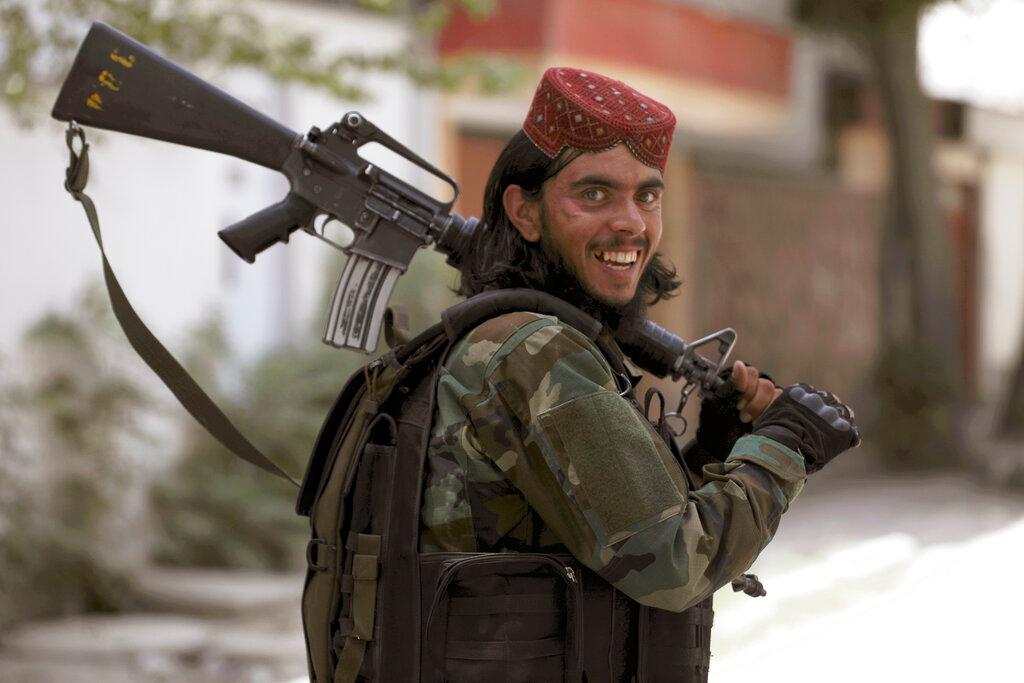Taliban’s arms seizures embarrass Washington
The Talbian seized huge amounts of weaponry, equipment and munitions from the Afghan armed forces, most of it supplied over the past two decades by Washington.
Just In
Videos of Taliban fighters parading in US-made armoured vehicles, wielding US-supplied firearms and climbing on American Black Hawk helicopters after the defeat of Afghan government forces have embarrassed the White House.
The Islamist insurgents, who easily captured control of the country after a months-long campaign, seized huge amounts of weaponry, equipment and munitions from the Afghan armed forces, most of it supplied over the past two decades by Washington.
Social media showed Taliban fighters carrying M4 and M18 assault rifles and M24 sniper weapons, driving around in the iconic US Humvees and, in one video, apparently wearing US-style special forces tactical uniforms.
The images are underpinning a political attack on President Joe Biden for alleged mishandling of the US withdrawal from the country after 20 years of war.
Most of the equipment has been seized from the Afghan forces who, despite two decades of training and tens of billions of dollars from the US, conceded the capital Kabul at the weekend without a fight.
“We don’t have a complete picture, obviously, of where every article of defence materials has gone. But certainly, a fair amount of it has fallen into the hands of the Taliban,” said White House National security adviser Jake Sullivan on Tuesday.
‘Botched withdrawal’
“Obviously, we don’t have a sense that they are going to readily hand it over to us,” he said.
Republicans seized on the admission to pounce on Biden.
“Thanks to Biden’s botched withdrawal, the Taliban is better equipped today than they ever have been,” said Republican national chair Ronna McDaniel.
According to official figures, the US military supplied the Afghan army with more than 7,000 machine guns, 4,700 Humvees and 20,000 grenades in recent years.
The Afghans have also received artillery and reconnaissance drones from Washington, as well as more than 200 aircraft, both fixed-wing and helicopters.
Their continued operation depended heavily on US technical support and parts, however.
According to photographs published Wednesday by Janes, the defence specialists, some 40 Afghan military aircraft were flown into Uzbekistan over the past week to escape the Taliban advance, including five UH-60 Black Hawk and 16 Russia Mi-17 helicopters and 10 A-29 Super Tucano attack airplanes.
In its 16-month drawdown, the Pentagon removed huge amounts of its own equipment from Afghanistan, and handed some of it to the Afghan army.
But hardware supplied to the Afghan forces that is now in Taliban hands has raised concerns.
Pentagon spokesman John Kirby said Wednesday that the department is looking at the issue.
Limited threat
“We obviously don’t want to see our equipment in the hands of those who would act against our interests, or the interests of the Afghan people,” Kirby told reporters.
“There are numerous policy choices that can be made, up to and including destruction,” he said, without giving specifics.
The captured arms and vehicles only expand the Taliban’s powers in limited ways, experts say.
“The most dangerous weapons the Taliban have captured are the D-30 howitzers and Afghan Air Force assets,” said Jonathan Schroden, director of the Countering Threats and Challenges Program at CNA, a Washington security consultancy.
“It is not clear that they have the ability to use all of the air platforms that they have captured, but they have already demonstrated the ability to use those howitzers,” he said.
Even then, it makes them at best a limited direct threat to better-armed neighbours.
On the other hand, the massive amounts of small arms and munitions they inherited, said Schroden, could “conceivably find their way to many different parts of the globe and to a variety of other terrorist groups.”
“Probably the best thing the US can do at this point is to work with Afghanistan’s neighbours to try and interdict the transport of any of this equipment across the country’s borders,” he said.
Subscribe to our newsletter
To be updated with all the latest news and analyses daily.
